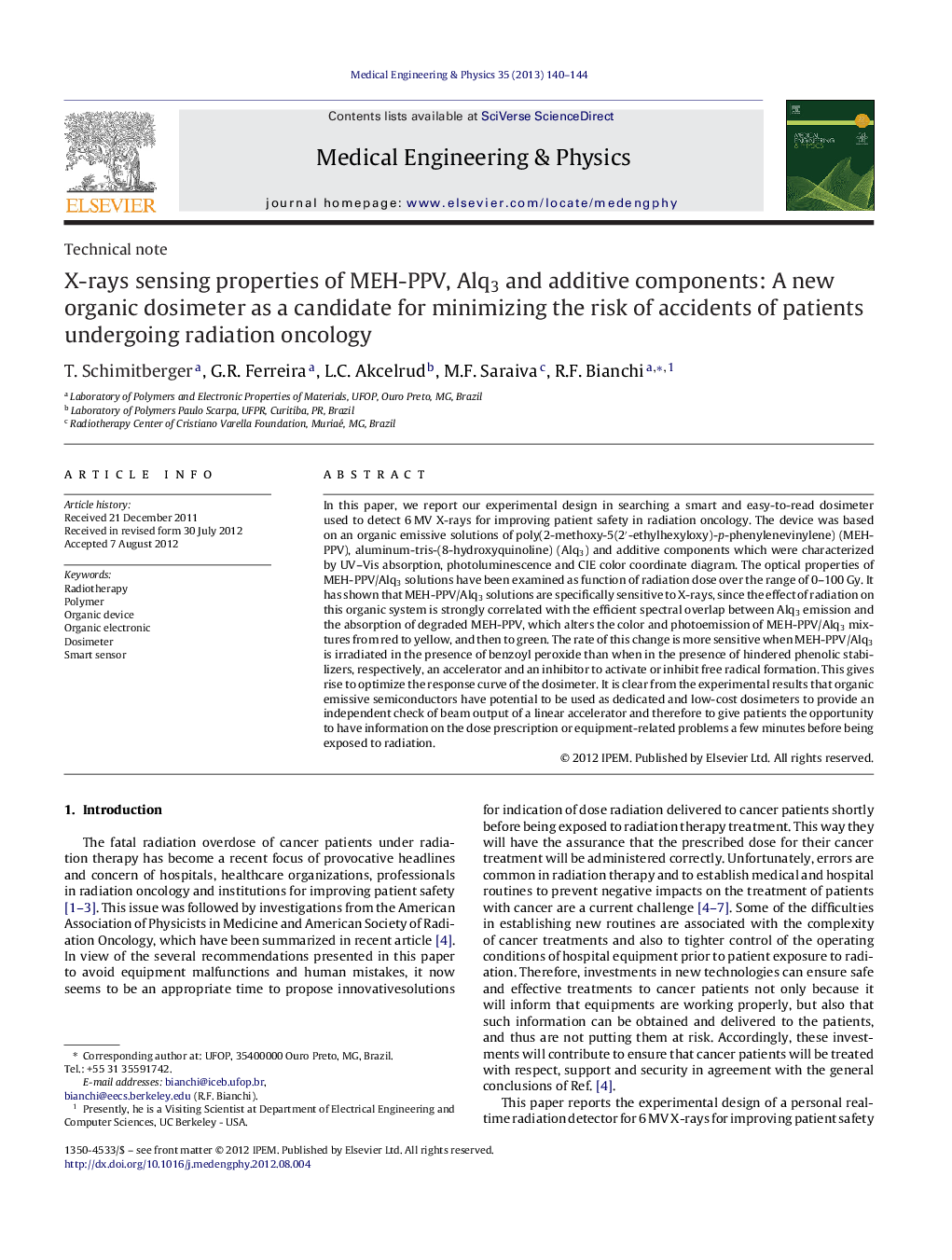| Article ID | Journal | Published Year | Pages | File Type |
|---|---|---|---|---|
| 876065 | Medical Engineering & Physics | 2013 | 5 Pages |
In this paper, we report our experimental design in searching a smart and easy-to-read dosimeter used to detect 6 MV X-rays for improving patient safety in radiation oncology. The device was based on an organic emissive solutions of poly(2-methoxy-5(2′-ethylhexyloxy)-p-phenylenevinylene) (MEH-PPV), aluminum-tris-(8-hydroxyquinoline) (Alq3) and additive components which were characterized by UV–Vis absorption, photoluminescence and CIE color coordinate diagram. The optical properties of MEH-PPV/Alq3 solutions have been examined as function of radiation dose over the range of 0–100 Gy. It has shown that MEH-PPV/Alq3 solutions are specifically sensitive to X-rays, since the effect of radiation on this organic system is strongly correlated with the efficient spectral overlap between Alq3 emission and the absorption of degraded MEH-PPV, which alters the color and photoemission of MEH-PPV/Alq3 mixtures from red to yellow, and then to green. The rate of this change is more sensitive when MEH-PPV/Alq3 is irradiated in the presence of benzoyl peroxide than when in the presence of hindered phenolic stabilizers, respectively, an accelerator and an inhibitor to activate or inhibit free radical formation. This gives rise to optimize the response curve of the dosimeter. It is clear from the experimental results that organic emissive semiconductors have potential to be used as dedicated and low-cost dosimeters to provide an independent check of beam output of a linear accelerator and therefore to give patients the opportunity to have information on the dose prescription or equipment-related problems a few minutes before being exposed to radiation.
